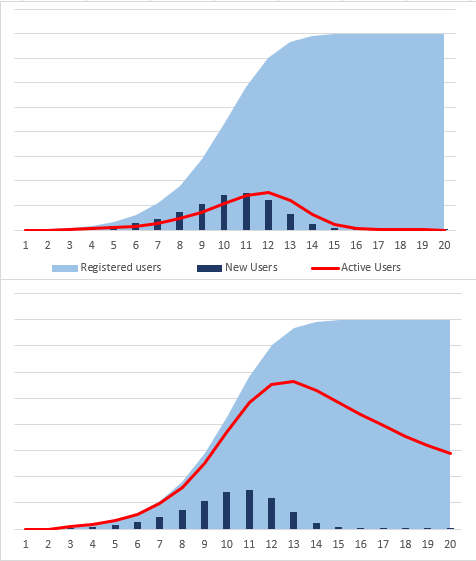- ARPDAUPosted 12 years ago
- What’s an impressive conversion rate? And other stats updatesPosted 12 years ago
- Your quick guide to metricsPosted 12 years ago
Understanding games designed for retention

From Deputy Editor Zoya Street
- Pocket Starships – farming mechanics
- Dark Orbit Reloaded – clan events designed around real-life social groupings
- Neverwinter – daily rewards and diminishing returns
Free-to-play games are designed differently. Unlike pay-up-front games, they’re not designed just to dazzle you for a short while and then fade away to nothing more than a memory. They’re not designed to consume from beginning to end over a weekend. At their best, they’re not even designed to force you to pay to progress or give up and leave.
A good free-to-play game is an anchoring point. No matter where you’re drifting in your day to day life, a free-to-play game is something that you can always come back to even if only for a moment.
This difference in use requires different design strategies. I’m going to call those strategies ‘retention games’: retention means that they are focused on encouraging a longer relationship between player and game rather than a rapid churn through. The term comes from the Pyramid model of game design.
Games are typically reviewed by people who are inconvenienced by the play patterns that most free-to-play games are designed for. If you’re accustomed to being able to play a game for hours upon hours without even a hint of regret — because it’s required for your job — then it’s jarring to find your progress delayed for up to a day at a time. Not to mention extremely frustrating, since it’s getting in the way of your work. Reviewers have different needs to ordinary players.
That said, games with a more thoughtfully crafted narrative to justify the retention mechanic are received far more positively in critical crowds. Extrasolar was nominated in the IGF awards, despite being a game that pushes the player away and asks them to wait for hours at a time to progress, because the wait is justified by the storytelling. ‘Retention’ is a cold word, but really it’s about stories and emotional connections.
I’m trying to get to grips with what makes a good retention game. How do designers see their own retention mechanics? What makes a retention mechanic successful? What does a good retention mechanic feel like? To see what I’ve learned so far, read the latest posts in the retention games series.











